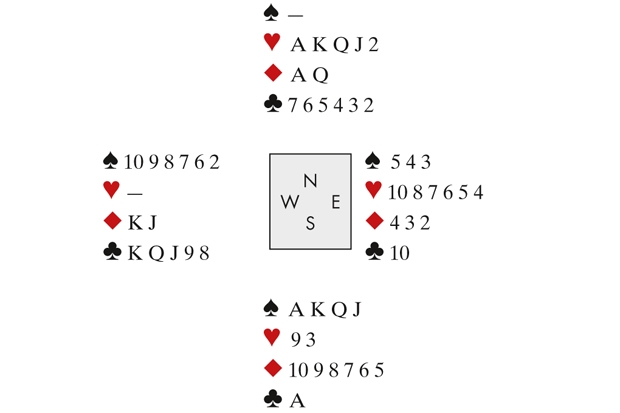It takes a lot for me to give up on a ‘double-dummy’ bridge problem — i.e. one in which you are shown all four hands and told game or slam is possible but have to work out how. I tell myself to imagine that I’m locked in a cell and won’t be released until I get the answer: surely if I think long and hard enough, it will come to me.
But solving bridge puzzles is not just a matter of thought power. Equally important is whether or not you’ve seen the type of problem involved before. It’s rather like trying to solve a cryptic crossword puzzle: even the most intelligent person won’t know how to go about it if they’re unfamiliar with the way cryptic clues work.
I was thinking about this the other day when a friend showed me the following puzzle. You may have seen a variant of it before, but if you haven’t, I imagine you’ll be well and truly stumped. The solution is spectacular and, by the way, there’s a clue in its title: The Heartbreaker.
South is in 6NT. West leads the ♣K.
The diamond finesse will establish all of South’s diamonds, but after the lead, how can declarer get back to his hand to cash them?
The solution is as follows: win the ♣A. Next — and this is the ‘heartbreaking’ bit — cash ♠A-K-Q-J discarding ♥A-K-Q-J! Now play a diamond to the ♦Q, cash the ♦A and play the ♥2.
What can East do? If he wins with the ♥10, then he has to give the lead back to South, all of whose cards are winners. If he ducks the heart, South wins the ♥9 and cashes his diamonds, losing just one heart at the end.








Comments
Join the debate for just £1 a month
Be part of the conversation with other Spectator readers by getting your first three months for £3.
UNLOCK ACCESS Just £1 a monthAlready a subscriber? Log in